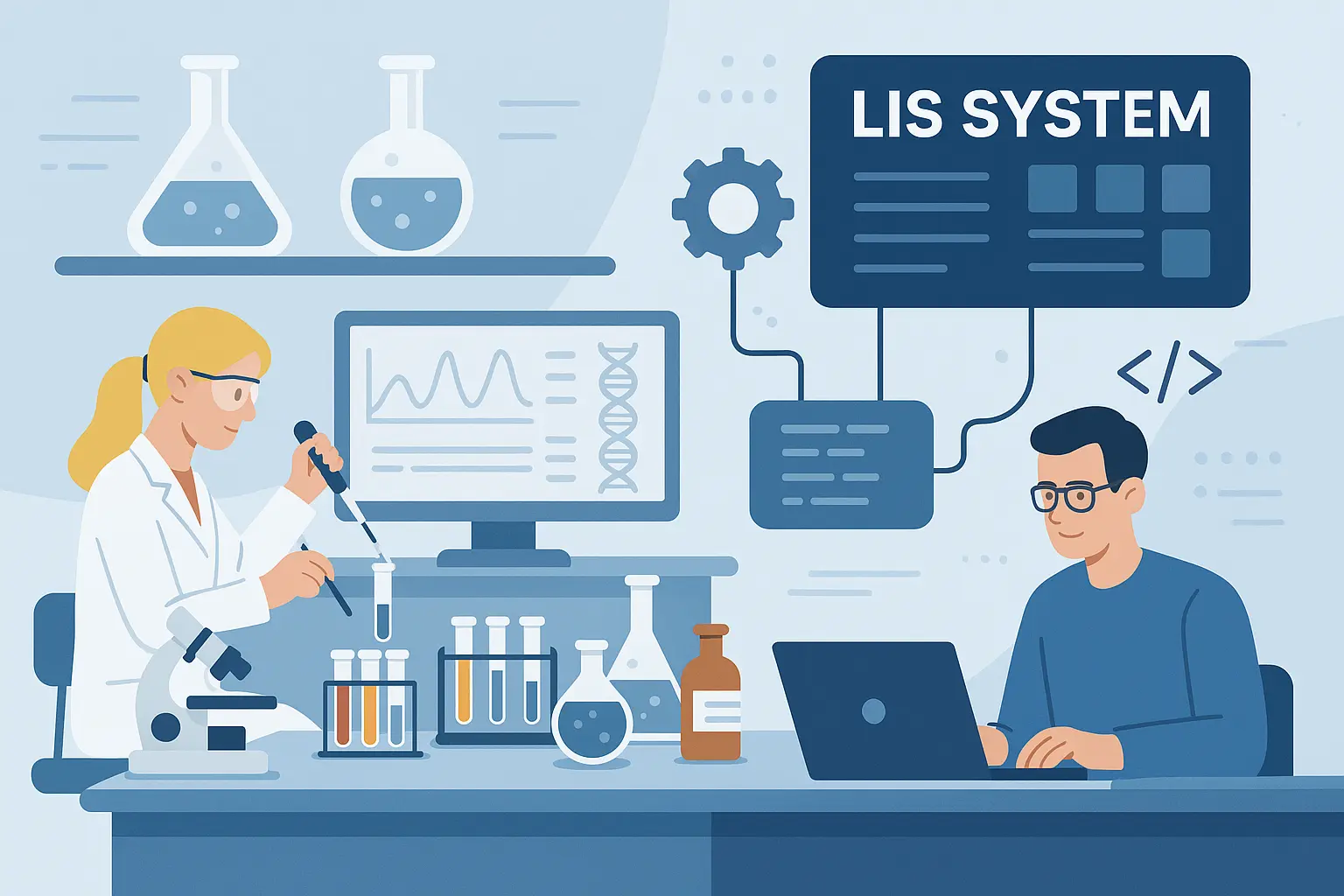Blog
How LigoLab Supports Medical Labs Dealing with Staffing Shortages
February 25, 2025
Behind the scenes, a laboratory professional is at nearly every stage of the healthcare continuum. In the U.S., approximately 14 billion laboratory tests are performed annually according to the Centers for Disease Control and Prevention (CDC), and 70 percent of today’s medical decisions depend on laboratory test results. That makes laboratory medicine an essential part of patient care.
“Lab testing is the highest-volume activity in the medical industry,” said LigoLab CEO, Suren Avunjian. “Nearly every time a patient enters a hospital or healthcare facility, their diagnosis is in the hands of a medical laboratory professional. Unfortunately, the industry is experiencing several significant challenges, and the staffing shortage currently tops the list.”
Although medical laboratories across the U.S. continue to deal with a decades-long shortage of medical laboratory scientists (MLS) and medical laboratory technicians (MLT), the problem has grown from a small trickle to a tidal wave.
While the exact number is unknown, Dr. Judy Stone, an infectious disease specialist and contributor to Forbes, has estimated the shortage of qualified medical lab professionals in the U.S. to be between 20,000 and 25,000 (read Dr. Stone’s article here).
To put the shortage into perspective, consider the workload of the 344,200 scientists/technicians who held positions in 2023. That’s roughly one lab professional for every 1,000 patients, each responsible for 40,674 of the 14 billion tests performed that year.

Why is This Happening in an Industry So Vital to Healthcare?
To get to the cause of the problem, the American Society for Clinical Pathology (ASCP) conducted a job satisfaction survey of laboratory professionals, which revealed that 85.3 percent were experiencing burnout. In addition, 36.5 percent of those surveyed said that inadequate staffing was the cause of their dissatisfaction, while roughly 35 percent attributed it to the workload. An additional 15 percent of those surveyed cited a lack of recognition for their work in the field (read the survey here).
“Staff turnover due to stress and burnout has become a major issue for lab operators who must take serious measures to correct this,” said Avunjian. “There is also a shortage of new professionals in the pipeline, especially lab technologists, and enrollment in lab-related education programs isn’t keeping pace with the number of people leaving the profession. As such, there is little hope that the industry will be able to fill the number of vacant positions being reported.”
The American Society for Clinical Laboratory Science lists the retirement of an aging workforce coupled with vacancy rates that exceed the number of MLS and MLT graduates as major reasons for the growing shortage. According to ASCLS, the total worker demand exceeds the current educational output by more than double (read more from ASCLS here).
Some factors deterring students from becoming new lab professionals are education requirements, expenses, and low starting wages. A two-year associate’s medical laboratory technician degree is required to become a lab technician. However, for a laboratory science degree, students face a five-year commitment. Then, after they graduate, they’ll need to be certified by ASCP.
The average cost for a degree in medical lab science is roughly $100,000. However, despite this high cost, medical lab professionals are paid 40-60 percent less than other medically trained professionals, like nurses, physical therapists, and pharmacists.
That isn’t a lot of incentive for such a big commitment, and even if the demand were there, the number of training programs is declining.
What Can Labs Do?
When asked about a possible solution to the problem, Avunjian explained that LIS laboratory information system technology can be leveraged to help fight this challenge.
“Implementing the right technology is the best way for labs to streamline their operations and modernize their laboratories,” he said. “By automating and supporting laboratory workflow management from the preanalytical phase, all the way through to post-analytical, a robust laboratory information system can help lab directors and managers fill the gaps created by staffing shortages.”
Simply stated, a laboratory information system (LIS system) is a pathology lab report software solution that manages and organizes virtually all aspects of molecular, clinical, and anatomic pathology testing workflows, which includes the inputting, tracking, processing, reporting, and storing of the specimen and patient data.
The modern versions of these specialized LIS systems support rules and automation that limit the need for human intervention, error-free and barcoded specimen handling and tracking, test result reporting, lab report distribution, and direct digital integration with EHRs, lab analyzers, and other third-party systems (like laboratory billing system software).
These modern LIS systems are not only the infrastructure centerpiece of advanced healthcare systems, busy independent laboratories, and hospitals across the U.S., but they’ve also become a viable staffing shortages solution, thanks to the efficiency and automation they create.
Learn More: Customizing LIS Systems for Specialized Laboratory Needs
According to Avunjian, a modern lab information system can positively affect all three phases of lab workflow, leading to faster turnaround times and ultimately better patient care.
On-Demand Webinar: Beat Pathologist Burnout & Combat Staffing Shortages

How Modern LIS Systems Improve the Preanalytical Phase
The preanalytical phase includes lab order entry, test selection, patient identification, and the collection and handling of the specimen. Any negligence during this phase can lead to costly errors. Because of this, the preanalytical phase must have rigorous LIS lab control measures in place to quickly identify any problems or errors and keep them from traveling further downstream. As you might have guessed, with staffing shortages and increasing testing volumes, it’s much harder to keep mistakes from happening during this critical phase without a highly functional medical LIS.
“A comprehensive and fully-featured LIS system software offers built-in rules and automation engines supported by real-time visibility into a lab’s clinical workflow. That’s not the case with legacy LIS systems,” said Avunjian. “This feature allows lab directors and managers to quickly identify potential issues at a granular level and then take the necessary steps to alleviate them. With older LIS systems, information on processes, bottlenecks, and compliance is difficult to access.”
In addition to rules and automation, Avunjian also touched on the importance of LIS medical interoperability with EHRs, client portals, and patient portals at this stage to cut down or eliminate redundant data entry. For example, he cited a physician's office sending an order via an interface to the lab, thereby eliminating the chance of typos during data entry. In this scenario, the lab also saves the time needed to enter orders and on FTE (full-time equivalent) who would otherwise have to enter the orders.
Learn More: Comparing LigoLab Informatics Platform with Legacy Laboratory Information System Software
How Modern LIS Systems Improve the Analytical Phase
The benefits of automated laboratory workflow management are especially prominent within the analytical phase, which includes validation of the test result and the release of the result for review.
“When a lab’s processes become automated, and its pathology software systems become interoperable and connected within an integrated workflow, several manual processes can be removed from the equation. This helps eliminate inefficiencies and redundancies and improves a lab’s quality of work. The medical LIS is what makes this possible,” continued Avunjian.
Avunjian cited the LigoLab Informatics Platform and how the system helps users focus on the task at hand as an example of this, stating that medical laboratory technicians need not worry about other steps and coordinating with other techs in other departments thanks to advanced laboratory information system software that coordinates their specific role automatically.”
How Modern LIS Systems Give the Post-Analytical Phase a Boost
The post-analytical phase covers the final value, the test result, and its diagnostic pathology report. Here, LigoLab supports automation that allows users to create fully customizable and intelligent lab reports and then effortlessly distribute them in several different ways (including by provider portal, outreach software, EHR, fax, secure email, courier, automated in-house printing in the doctor’s office, PDF drops, APIs, IVR, and SMS) by setting preferences for users and providers within the reporting and distribution engines. No matter the delivery method, the LIS system coordinates the delivery and frequency based on the customer’s choice.
These engines put the laboratory and its customers in control. They allow the lab to accommodate the variety of requirements that come from physicians. Users configure the settings for a particular customer just once and then let the automation take over. With this level of customization comes the market differentiation that allows one lab business to stand out from the competition.
“The report is the product of the laboratory, so delivering reports that ‘WOW’ their customers quickly and efficiently are keys,” said Avunjian, who also noted that by eliminating paper processes and manual data entry for reporting and lab billing (lab revenue cycle management), lab directors and managers can focus more of their energy on growing their businesses.

Introducing the All-in-One LigoLab LIS & RCM Laboratory Informatics Platform
Although battling staffing shortages is critically important, it can’t be done at the expense of service quality. Fortunately, with the right pathology lab software, labs can close the gaps created by staffing shortages while simultaneously improving lab standards.
As for the question of which laboratory information system vendors to choose as a long-term solution to the staffing challenges, Avunjian suggested lab leadership shouldn’t look for LIS vendors, but for LIS system partners, ones with a reputation for high-touch customer service that offer a fully-featured and flexible pathology management software product that will future-proof the lab’s operations for years to come.
“LigoLab Informatics Platform is a comprehensive enterprise-grade pathology lab management solution that supports all laboratory diagnostics disciplines, including anatomic pathology (anatomic pathology LIS), clinical pathology (medical LIS), molecular diagnostics (molecular LIS), genomics, and toxicology,” said Avunjian. “It’s an all-in-one diagnostic lab software solution that tackles all of today’s laboratory challenges, the biggest being multiple disparate systems and a lack of automation that calls for manual processes to complete workflows. Our LIS system platform automates core processes and provides real-time visibility into operational and financial performance.”






